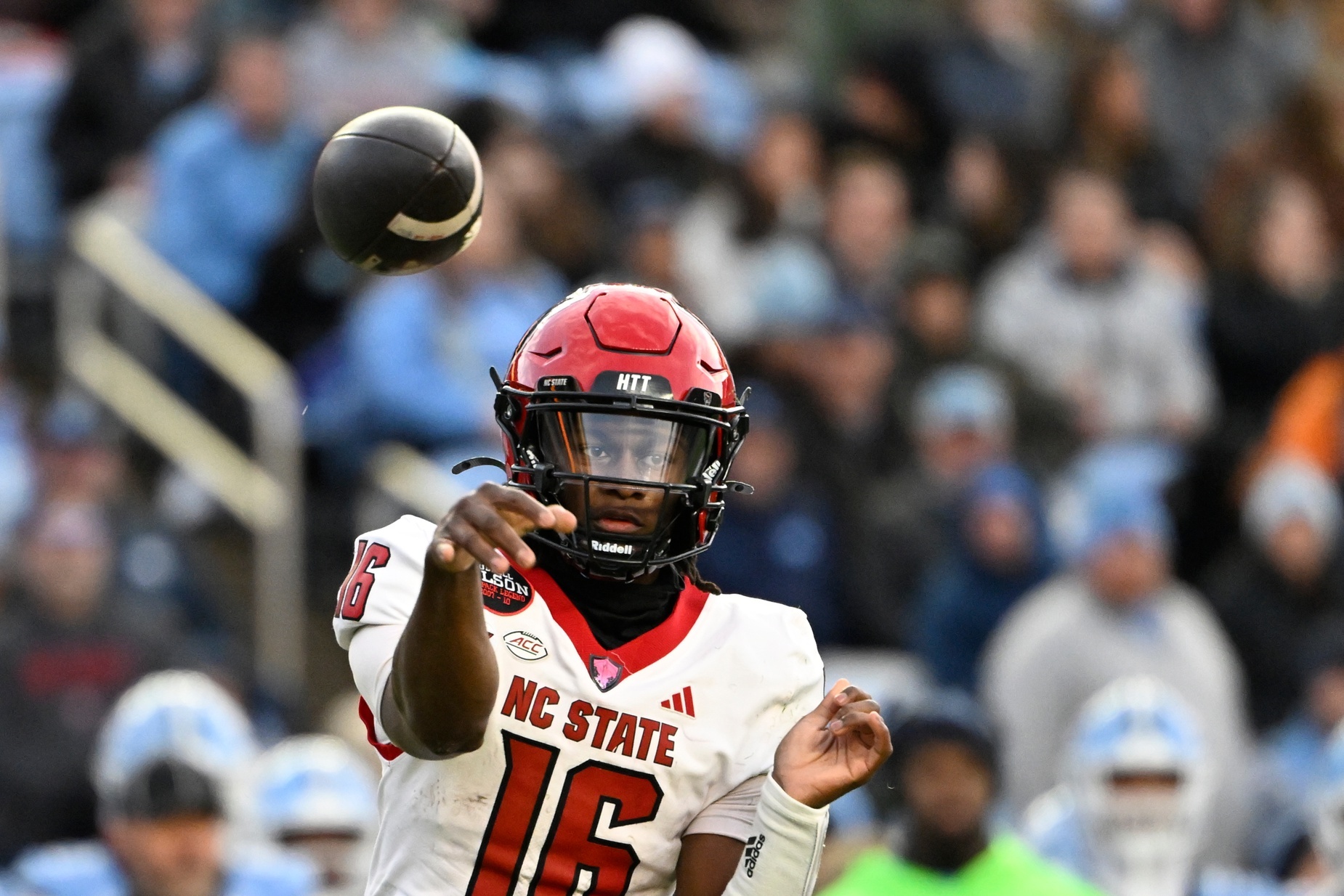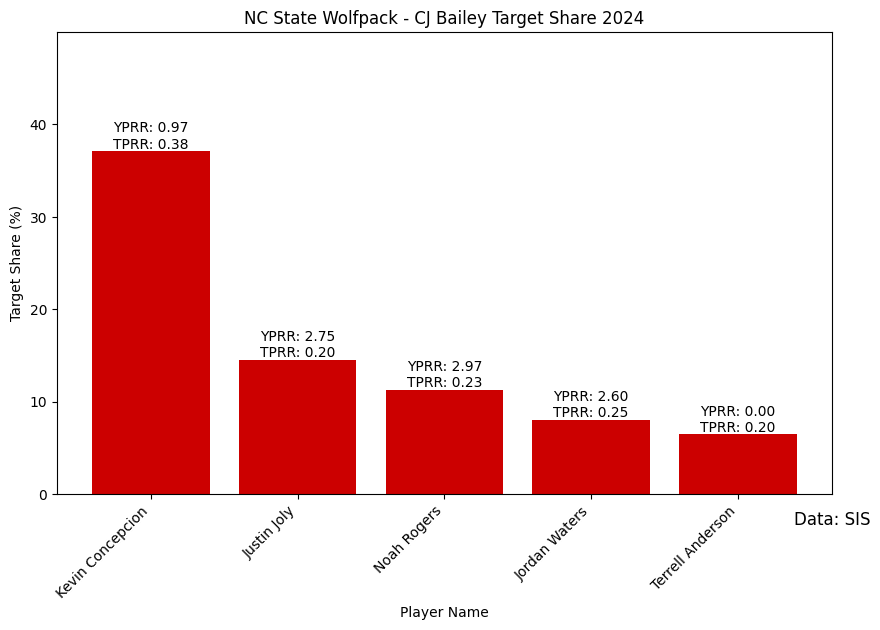CFB DFS DraftKings Main Slate Breakdown: Week 6

Using his experience as a former scout and staff member at Central Florida under Josh Heupel, Jordan Vanek takes an in-depth look at the upcoming CFB DFS main slate on DraftKings. Formerly of The 33rd Team and 4for4 Fantasy Football, Jordan will do a deep dive into the best stacks, running backs, and wide receivers before giving his overall thoughts on some slate strategy.
Week 5 offered plenty of strong process plays, including the Indiana stack and Giddens/Stribling. Unfortunately, Dante Dowdell was the one player who didn’t deliver as expected. Despite that, we had some good calls, and I’m ready to build on those as we head into another exciting slate.
This upcoming weekend looks incredible, with matchups like WVU/OKST and PITT/UNC, both featuring totals exceeding 60 points. With high-scoring potential in these games, there’s a lot of opportunity to take advantage of, and I’m particularly excited about the value and upside this slate offers. Let’s dive into the best plays and strategies to maximize the lineups we build using our CFB DFS optimizer, LineupHQ.
If you have any questions about my analysis or the slate overall, feel free to reach out in the RotoGrinders Discord.
Editor’s Note: Looking for more places to play? Check out our PrizePicks promo code and Underdog Fantasy promo code, two of the best DFS apps available today.
CFB DFS DraftKings Picks: Top Stacks, Running Backs, & Wide Receivers for Week 6
Now that we’re 5 weeks into the season, we can start leveraging coverage data from Sports Info Solutions to analyze the defensive schemes teams are deploying. Before diving into the data, it’s important to highlight a couple of key points. First, screen passes are excluded from the analysis because, in my opinion, it’s difficult to accurately determine the defensive coverage on those plays. As a result, the coverage percentages you’ll see won’t add up to 100 percent.
With that in mind, let’s explore what these charts reveal and why this information is essential for constructing stacks and understanding matchups. By analyzing this data, we can gain valuable insights into how players can exploit specific defensive schemes, giving us a competitive edge in lineup construction.
Single High vs. Two High

Single-high coverage refers to a defensive scheme where a single safety is positioned deep in the middle of the field, tasked with defending against long passes and providing help over the top. This setup often leaves cornerbacks on islands with wide receivers, which can create opportunities for big plays if the receivers win their matchups. Teams like Oklahoma State, Virginia Tech, Missouri, Wisconsin, NC State, and Purdue are known for frequently utilizing this strategy.
South Carolina has been using a lot of single-high coverage this season, even against a team like LSU when they had wide receivers such as Kyren Lacy. If South Carolina continues to rely on this scheme against Tre Harris, it could lead to another huge performance from him. With Harris’ ability to exploit man coverage, especially in one-on-one situations, he’s primed for a standout game if South Carolina doesn’t adjust their defensive approach.
Two-high coverage, on the other hand, positions two safeties deeper in the field, each covering a half, which provides more protection against deep passes but can leave the defense vulnerable to runs or shorter passes underneath. Teams like Iowa, Wake Forest, Virginia, and Pittsburgh frequently utilize this strategy to defend against explosive passing plays.
However, I don’t expect Pittsburgh to rely heavily on two-high coverage against North Carolina. With the threat posed by Omarion Hampton in the run game, Pittsburgh will likely bring an extra safety down into the box to bolster their run defense. This approach is something they’ve consistently done when facing heavy run formations—on 47 rushing attempts with two tight ends on the field this season, they brought the extra defender down into the box on 40 occasions. Given North Carolina’s reliance on their ground attack with Hampton, it’s likely Pittsburgh will continue this trend, prioritizing stopping the run over deep coverage.
Man vs. Zone

Man coverage is a defensive scheme where a defender is assigned to cover a specific offensive player throughout the play. Teams that heavily rely on man coverage often align with those that use a lot of single-high coverage, such as Purdue and Oklahoma State. These defenses trust their cornerbacks to handle receivers one-on-one, with minimal safety help. Ole Miss, however, has mixed in significant amounts of cover-2 man coverage, where two safeties stay deep, offering support over the top while the defenders play man-to-man underneath. Virginia Tech and Penn State are also notable for their frequent use of man coverage, often incorporating blitzes. This approach can leave defenses vulnerable to big plays, especially if the opposing offense has a wide receiver who can consistently win one-on-one battles—someone like Stanford’s Elic Ayomanor comes to mind.
On the flip side, zone coverage tasks defenders with covering specific areas of the field rather than individual players. Though players might find themselves in man-to-man situations if an opponent enters their zone, their responsibilities are determined by the defensive call. Teams that frequently employ zone coverage include West Virginia, Iowa, Vanderbilt, Wake Forest, Pittsburgh, Louisville, and Georgia.
It will be interesting to see how Ohio State’s wide receivers fare against Iowa’s zone defense. The “sicko” in me is curious about how freshman phenom Jeremiah Smith will navigate route depths and zone breaks, things that typically challenge younger players. This could be a week where Smith’s stats are quieter, potentially creating more opportunities for Emeka Egbuka and Ohio State’s ground game to thrive against this disciplined zone scheme.
Stacks
CJ Bailey ($5,100, QB, NC State)
Kevin Concepcion ($6,700, WR, NC State)
Justin Joly ($3,500, WR, NC State)
Demond Claiborne ($5,500, RB, Wake Forest)

It’s not often that I find myself touting a $5,100 QB, but this week’s matchup and the way I’m constructing lineups make Bailey an intriguing option. Wake Forest’s defense has been awful, allowing over 30 points in each of the last 3 weeks, and they’ve been particularly vulnerable through the air. Over the past 3 games, opposing QBs have consistently thrown for over 350 yards or accounted for 3 passing touchdowns. This week, NC State finally has a significant advantage against a struggling Wake Forest defense, making Bailey a great value play despite his recent struggles.
Bailey’s game log may not look appealing at first glance, but we have to remember the context. He was thrown into action unexpectedly against Louisiana Tech due to injury, faced a dominant Clemson defense, and then settled in with a win over Northern Illinois—a team that upset Notre Dame earlier in the season. What makes Bailey even more appealing is the certainty in his target distribution. Concepcion commands nearly 40% of his targets, while Joly is at around 15%, with an impressive 2.75 yards per route run. Joly has also been Bailey’s go-to option against two-high coverage looks, which Wake Forest deploys at a high rate. Given these factors, Bailey’s value at $5,100 is worth the investment in this favorable matchup.

The bring-back option doesn’t need to be forced, but I really like Claiborne. He’s likely to see the majority of touches at running back, and his explosive ability poses a significant challenge for NC State’s defense, which has struggled against the run. Over the last 4 weeks, 3 different running backs have surpassed 100 yards against NC State, with some doing so on a limited number of carries. Claiborne’s mix of volume and big-play potential makes him a solid option, especially given NC State’s recent issues with allowing explosive runs.
This content can help you make better CFB DFS picks
- To access this content, subscribe to CFB Premium or purchase a 3-day trial.
- A CFB subscription will allow you to access this content and much more!
About the Author
Jordan Vanek has been playing DFS since 2016. He attended the University of Central Florida, where he joined the football staff as a player personnel intern and participated in the recruitment of Dillon Gabriel and Ryan O’Keefe. Formerly of The 33rd Team and 4for4 Fantasy Football, Jordan joined the RotoGrinders team in 2024 and will be providing College Football and NFL DFS content for Premium subscribers. Follow Jordan on Twitter – @JordanVanekDFS
